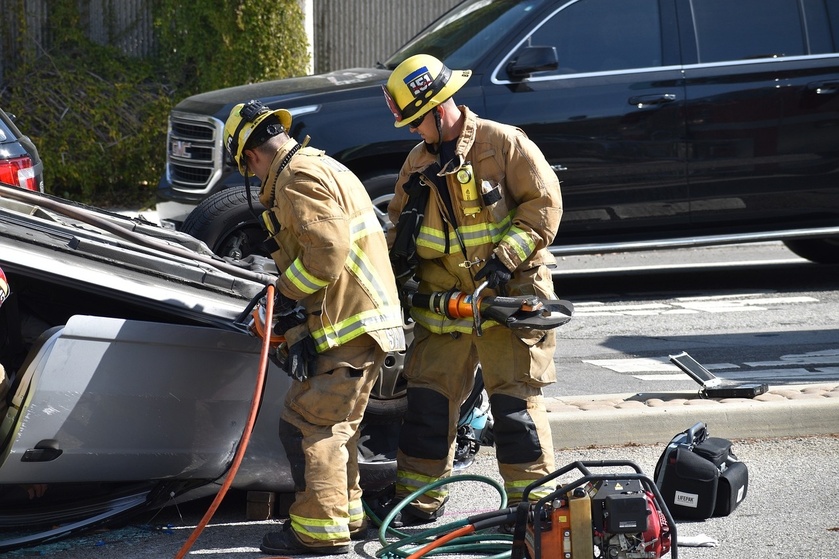
Road safety is influenced by more than just driver behavior. The design, maintenance, and condition of local roads play a crucial role in determining how safe or hazardous travel can be. From potholes to poor signage, small environmental and infrastructure details often set the stage for serious accidents. Understanding how local road conditions affect accident risks helps communities, policymakers, and drivers work together to reduce collisions and improve safety outcomes.
The Relationship Between Road Conditions and Accident Risk
Every roadway carries its own unique risks. Local roads, in particular, tend to see a higher frequency of minor accidents and fender-benders due to their complex layouts and frequent intersections. Poorly maintained or poorly designed roads magnify these dangers.
Surface Quality and Maintenance Issues
Cracked pavement, potholes, and uneven road surfaces can cause a driver to lose control, especially when traveling at higher speeds. These hazards often lead to:
Tire blowouts from sharp edges or deep holes
Vehicle misalignment due to repeated impact stress
Skidding or hydroplaning in wet conditions
Local governments are responsible for maintaining these surfaces, yet limited budgets can delay repair efforts. The resulting deterioration contributes to both vehicle damage and higher crash probabilities.
Poor Drainage and Weather-Related Dangers
Water accumulation on roads — whether from heavy rain or melting snow — increases the risk of hydroplaning. Poor drainage systems fail to divert water away from driving surfaces, leading to slippery patches and reduced tire traction. In colder regions, the freeze-thaw cycle creates black ice, which can be nearly invisible to drivers and causes sudden loss of control.
According to data from the National Highway Traffic Safety Administration (NHTSA), weather-related road conditions contribute to thousands of crashes and fatalities each year, particularly in areas that experience frequent precipitation or freezing temperatures.
Design and Structural Elements That Influence Safety
Road safety isn’t only about surface quality — it also depends on how the road is designed and structured. Poorly planned intersections, inadequate lighting, and confusing signage can all increase the likelihood of collisions.
Inadequate Signage and Visibility
Local roads often lack sufficient signage or rely on faded, outdated indicators. Missing stop signs or obscured speed limit markers confuse drivers unfamiliar with the area. At night, poorly lit roads reduce visibility, increasing the danger of hitting pedestrians, cyclists, or obstacles.
Streetlights and reflective lane markings are inexpensive yet critical features that can drastically reduce accidents. Communities that invest in proper visibility tools tend to report fewer nighttime collisions.
Dangerous Intersections and Road Layouts
Complex intersections, roundabouts, or roads with blind curves are hotspots for accidents. Local roads often wind through residential or rural areas where trees, buildings, or parked cars obstruct views. These structural elements create conditions where drivers cannot react quickly enough to avoid collisions.
Inconsistent speed limits between adjacent zones also pose a threat. Drivers transitioning from highways to local streets may not adjust their speed appropriately, leading to high-impact collisions.
The Role of Roadside Environment and Surroundings
The environment surrounding a local road can also increase accident risks. Factors like vegetation, debris, and nearby pedestrian activity all interact with the driving environment.
Vegetation and Obstructed Views
Overgrown trees or shrubs that block signs, lights, or intersections reduce situational awareness. Drivers may not notice crosswalks, yield signs, or other vehicles entering from side roads. Regular maintenance of roadside vegetation is essential to maintaining clear lines of sight.
Debris, Animals, and Pedestrian Traffic
In many rural or suburban areas, animals crossing the road create unpredictable hazards. Meanwhile, on urban local roads, pedestrians and cyclists add another layer of complexity. Without dedicated sidewalks or bike lanes, shared roadways can result in severe accidents when drivers fail to anticipate non-vehicular movement.
Human Behavior in Response to Poor Road Conditions
While infrastructure plays a primary role in accident risks, driver behavior in response to these conditions often determines the severity of outcomes.
Speed and Risk Perception
Drivers tend to adjust their speed based on their perception of road safety. On newly paved or wide roads, they may speed up, assuming a lower level of danger. Conversely, on deteriorated roads, they may slow down — but not always enough to prevent accidents. Misjudging braking distances or traction levels on rough terrain is a common cause of crashes.
Distraction and Reaction Time
Navigating bumpy or poorly marked roads demands higher concentration. Unfortunately, distracted driving is increasingly common, reducing the time available to react to sudden hazards. A small lapse in attention — such as glancing at a phone — can lead to a catastrophic event on roads with minimal safety margins.
How Local Governments and Communities Can Reduce Accident Risks
Improving road safety requires collaboration between drivers, communities, and local authorities. Proactive maintenance, data-driven planning, and technology can help minimize risks and save lives.
Regular Maintenance and Inspection Programs
Routine inspections help identify dangerous conditions before they cause harm. Municipalities should prioritize maintenance schedules based on traffic density and accident reports. Transparent communication channels between residents and local road departments can also ensure hazards are reported and repaired quickly.
Smart Infrastructure and Data-Driven Planning
Emerging technologies like road condition sensors and automated traffic monitoring can help cities collect data on accident-prone areas. These insights allow engineers to redesign intersections, improve drainage, or install safety barriers where needed.
Cities that invest in smart infrastructure not only enhance safety but also reduce long-term costs by preventing damage and injury.
Public Awareness and Driver Education
Educating drivers about adapting to different road conditions — such as slowing down on wet surfaces or maintaining safe following distances on gravel — can drastically reduce crash rates. Local campaigns and community programs can raise awareness about the specific risks present in a given area.
Legal Implications and Seeking Help After a Road Accident
When poor road conditions contribute to an accident, liability can become complex. Multiple parties — including local governments, contractors, and private property owners — may share responsibility. Determining who is legally at fault requires thorough investigation and documentation.
If you’ve been involved in a crash that may have been influenced by local road conditions, consulting an experienced car accident lawyer at Suzuki Law can help you understand your rights and options for compensation. Legal professionals familiar with roadway liability cases can assist in collecting evidence, filing claims, and negotiating with insurance companies.
Additionally, information about the firm’s services and credentials can be found on legal directories, which outlines their experience in handling complex personal injury cases.
Conclusion
Local road conditions influence accident risks more than most drivers realize. From pavement quality to visibility and design, each factor contributes to the overall safety of a driving environment. Addressing these challenges requires more than patching potholes — it demands a holistic approach combining engineering, education, and enforcement.
By investing in better infrastructure, promoting responsible driving behavior, and understanding legal recourse when accidents occur, communities can take meaningful steps toward safer roads for everyone.

















